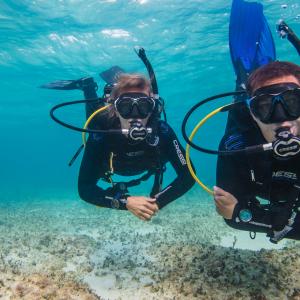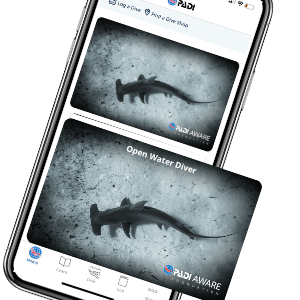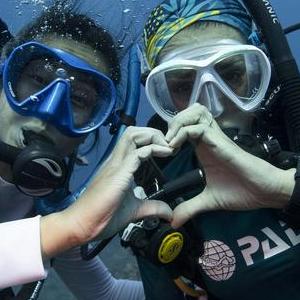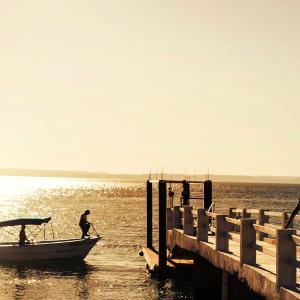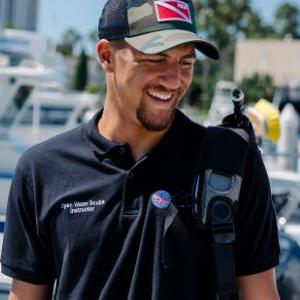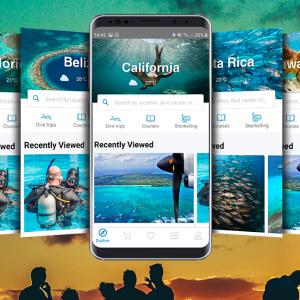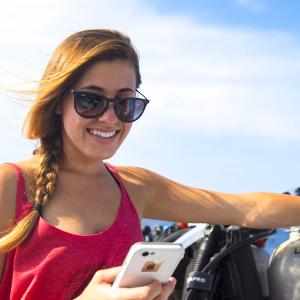
Scuba Diving Certification
Interested in learning to scuba dive? You’ve come to the right place.
Millions of underwater explorers started right here.
Diving offers an escape from the pressures of daily life, access to an amazing world beneath the waves and the ability to affect positive ocean change. Join us! #LiveUnfiltered

Getting Started
Discover Scuba Diving: If you want to try scuba diving, but you’re not quite ready to take the plunge into a scuba certification course, most PADI® Dive Shops offer a half-day experience called Discover Scuba Diving in a pool or pool-like environment, with an optional open water dive. It’s a quick and easy way to find out if you like scuba diving. Start your Discover Scuba Diving Course.
Open Water Diver: A scuba diving certification or ‘Open Water Diver certification’ allows you to dive anywhere in the world. Similar to driving a car, scuba diving requires specific knowledge, skills and training. A PADI Open Water Diver certification is your passport to underwater adventure.
3 Certification Options

1
Learn to Dive Close to Home
Complete all three parts of your scuba certification near home: knowledge development, pool practice and open water training dives.
Benefits: Take as much time as you need, connect with your local dive community, explore regional dive sites and you will be fully certified for your next vacation.

2
Start at Home, Finish on Vacation
If you want to get a head start on your scuba certification but prefer to complete your open water training dives on vacation where you will be doing most of your diving, you can complete your knowledge development and pool practice at home first.
Benefits: Use PADI eLearning to finish independent study online and complete pool practice with a dive shop before travel. You’ll minimize classroom time on vacation and gain more time to explore the underwater world.

3
Learn on Vacation
Complete all three parts of the course on vacation: knowledge development, pool practice and open water dives. If you want to save time and get a head start, use PADI eLearning to complete your independent study online before or during travel to minimize classroom time, then connect with your chosen Dive Shop to finish your certification.
Benefits: Learn to scuba dive abroad where you want to start your underwater adventure and meet divers from other parts of the globe.

Diving Gives Back to the Ocean
When you become a PADI diver, you join the largest community in the world for ocean change. With a network of 6,600 dive centers and resorts,128,000 professional members and over 30 million certified divers to date, we have a tremendous opportunity to mobilize millions of PADI Torchbearers to save the ocean.
In our mission to safeguard our blue planet, the PADI community with PADI AWARE Foundation is turning the tide on ocean change, but this is just the beginning.
30 million divers can't be wrong...
There's nothing better than the thrill of learning a skill that opens your eyes to a whole new world of adventure. But don't just take our word for it, here's what PADI Divers are saying:

Dive Travel
If you want to seek adventure and save the ocean, PADI Travel® can connect you with more than 500 resorts worldwide. By combining a resort stay with a PADI Open Water Diver course, you will also get a great deal.

Scuba Lessons for Kids
If your child is at least 8 years old, a fun and exciting way for them to experience scuba diving is to enroll them in a Bubblemaker or Seal Team program first.
The Bubblemaker program is an experience program in a pool or confined water that is as fun as it sounds–a chance for kids to blow bubbles underwater while scuba diving!
The Seal Team program is a multi-session pool program that covers basic scuba diving skills and action-packed AquaMissions.
Kids 10 years or older can take the Open Water Diver course and earn a Junior Open Water Diver certification.
Learn More About How to Become a Scuba Diver
Here are some popular articles written by PADI Divers.
Scuba Diving Certification FAQs
Your questions answered.
There are three steps to becoming a certified diver: knowledge development, In-water training, and open water dives.
Knowledge development is the first step and requirement for a recreational Open Water Diver certification. PADI eLearning is an independent study option that lets you learn at your own pace, providing the knowledge and fundamentals you will need to confidently advance to your in-water training with a PADI Instructor.
In-water training: During this step, you will practice your dive skills and learn how to use your scuba gear with a PADI Professional in a pool or pool-like environment. These practice dives will help you build your confidence before you begin your open water dive training.
Open water training: During this third and final step you will complete four open water dives with a PADI Instructor to complete your PADI dive certification.
The first level of a scuba certification is Open Water Diver, which on average can be completed in 3-5 days.
The independent study using PADI’s digital learning program (eLearning) takes about eight hours. In-water work with a professional PADI Dive Instructor, includes pool training and open water dives which can be completed in just a few days.
The PADI Open Water Diver course is flexible and performance-based, which means you progress at your own pace. Once you and your instructor feel confident that you've mastered a skill, you’ll move on to the next one. If you want to try the new skill a few more times, that’s okay too. The goal is for you to learn how to be a safe, confident diver and feel comfortable in the water.
Learning to dive is an exciting and challenging experience. With PADI eLearning you can read, watch videos, and take quizzes at your own pace to achieve the dive knowledge and fundamentals required to confidently advance to your in-water training. An experienced PADI Instructor will help you every step of the way during your training to become a safe and competent diver.
No, it’s never too late to start diving. You only need to be in good health and reasonably fit. All PADI students are required to complete a medical questionnaire prior to diving. Some regions also require a doctor’s medical statement confirming you’re medically fit to dive prior to course enrollment/diving. As diving has inherent risks, minimum age limits are in place to ensure children can understand dive theory and react to situations responsibly, but there is no maximum limit.
Average Certification Cost: The average cost of obtaining your PADI certification will vary based on the specific course and location you choose. Please contact your chosen Dive Shop for pricing.
PADI eLearning Cost: If you wish to start your knowledge portion of the training first you can purchase PADI eLearning and begin this step on your own time. If you are new to diving, you will want to start Open Water Diver eLearning which costs around $230 USD. Continuing education course prices vary by certification type. See full list of PADI eLearning courses.
In-Water Training Cost: After you complete your PADI eLearning you will need to complete your in-water training with your chosen Dive Shop. The cost for this specific training will depend upon your location. Please contact your chosen Dive Shop for in-water training cost. If you have already purchased your eLearning, please notify the Dive Shop when asking for pricing.
There are many affordable options when learning to scuba dive. For the required knowledge development portion of your dive training, PADI eLearning is an independent study option that allows you to learn at your own pace for a moderate price. Check with your local Dive Shops and compare prices for your in-water training. Many Dive Shops offer discounted packages during off-peak seasons, depending on location. Dive equipment rental may also be included in training packages, providing cost savings. After you become certified, renting scuba gear is an affordable alternative to buying your scuba gear, and also saves the trouble of storing and traveling with dive gear. Diving locally is a budget-friendly alternative to dive travel and a great way to meet other divers within your community.
Yes. People with missing limbs, reduced mobility, or other physical challenges commonly earn the PADI Open Water Diver certification. Even individuals with more significant physical or mental challenges can still take part in scuba experiences. Talk to your PADI Instructor at your local PADI Dive Center or Resort for more information.
All student divers complete a brief scuba medical questionnaire that asks about medical conditions that could be a problem while diving and will determine if you need to be evaluated by a physician before being able to scuba dive. If the doctor approves, or none of the conditions applied to you, you're ready to start!
You need basic swimming skills and the ability to comfortably maintain yourself in the water. Your PADI Instructor will ask you to:
- Swim 200 metres/yards (or 300 metres/yards wearing mask, fins and snorkel) without stopping. There is no time limit, and you may use any swimming strokes you want.
- Float and tread water for 10 minutes, using any method(s) you want.
Your PADI certification does not expire. If you haven’t been diving in a while and wish to refresh your scuba safety knowledge and skills, ask your dive shop about the PADI ReActivate™ course.
When you’re lucky, you get to see a shark. Although incidents with sharks occur, they are very rare and, with respect to diving, primarily involve spear fishing or feeding sharks, both of which trigger feeding behavior. Most of the time, if you see a shark it’s just passing through and a rare sight to enjoy.
Aside from pregnancy, no. Because physiologists know little about the effects of diving on the fetus, the recommendation is that women avoid diving while pregnant or trying to become pregnant. Menstruation is not normally a concern.
Your PADI Instructor will be by your side the entire time. Your first dives will be to 12 meters/40 feet or shallower. The maximum depth allowed for any dive during the open water course is 18 meters/60 feet.
People find the “weightlessness” of scuba diving to be quite freeing. Modern scuba masks are available in translucent models, which you may prefer. During your scuba diving training, your instructor will give you plenty of time and assistance to ensure you are comfortable.
Once you have completed your certification, you will receive a PADI certification card! The card has details of your certification level and date, along with you and your instructor's name and number.
For questions regarding plastic or eCard (electronic version), please see our Certification Card FAQ.
If you have an eCard, you can access through the free PADI App.
Come Explore With Us!
You'll receive messages showcasing incredible dive destinations, PADI courses, products, event invitations and amazing marine life.
Sign Up for 10% off* Your Next Dive eLearning Course!
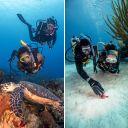 Open Water Diver & Dive Against Debris eLearning Bundle
Open Water Diver & Dive Against Debris eLearning Bundle
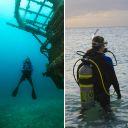 Advanced Open Water & Enriched Air eLearning Bundle
Advanced Open Water & Enriched Air eLearning Bundle
 Emergency First Response
Emergency First Response
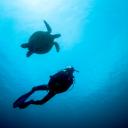 FREE – Introduction to Scuba Diving Online
FREE – Introduction to Scuba Diving Online
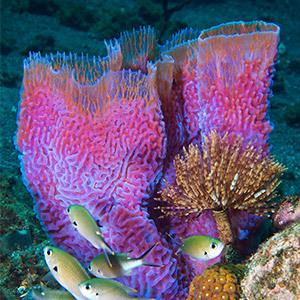
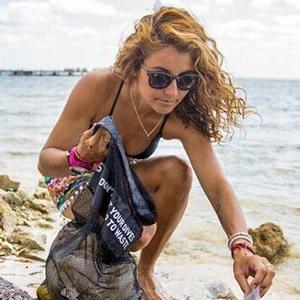

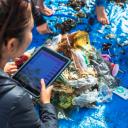 Marine Debris
Marine Debris
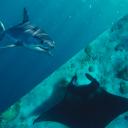 Shark & Ray Protection
Shark & Ray Protection
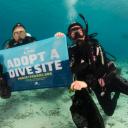 Adopt The Blue
Adopt The Blue


